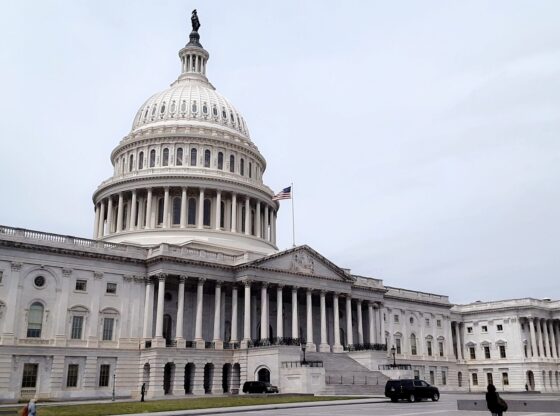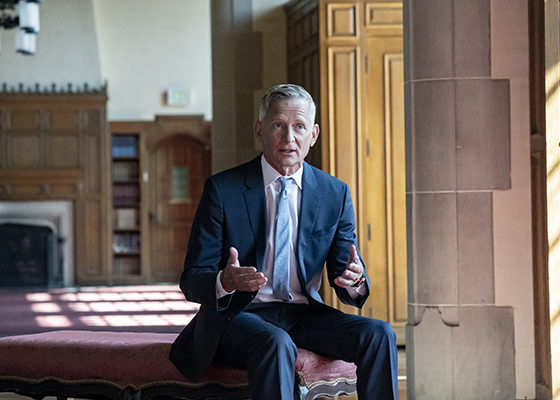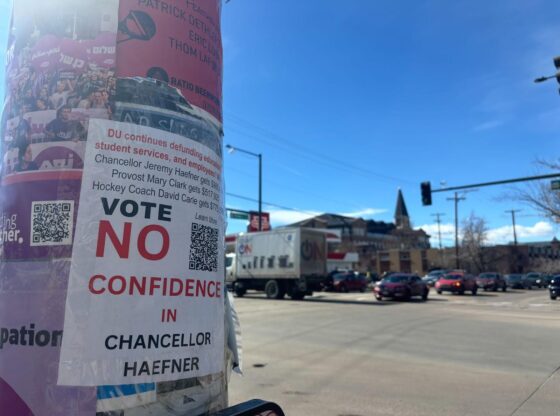No matter where you look in the news, it’s probably a safe bet that it won’t take long to find the word “populism.” With a complete understanding of populism, however, you begin to see it in every aspect of political life. Before diving into why this might be the case, it is useful to define what exactly populism is.
Cas Mudde is a well-regarded political scientist, especially in the field of populism. He has primarily studied European populism, but his definition of populism speaks to the politics of every country.
For him, populism is best defined as a “thin-centered” ideology that views society as being separated into two “homogenous and antagonistic groups.” The two groups are “the people” and “the elite,” with populist politicians claiming to represent the will of the people.
This idea of populism being a “thin-centered” ideology is particularly important. The “thin” nature of it relates to the fact that populism alone does not lay out “what kind of world a populist wants.” Instead, populism is a framework that politicians might use to accompany their political agenda.
Comparing and contrasting Bernie Sanders and Donald Trump illuminates what exactly Mudde means by this concept.
Anyone who has watched Sanders speak can easily conclude that he views people as being split into two groups. His rhetoric always lays out that the “top 1%” is working against “the working class.” By splitting the US population into two groups in such a manner, Mudde’s definition applies to Sanders.
Furthermore, the same can be said for Trump. He often lambasts the “leftist elite” and the “globalists.” Trump often states that these elitist groups are destroying the traditions of the “hard-working Americans.” Just as with Sanders, the dichotomous view of the American population confirms his populist tendencies.
Understanding that both Sanders and Trump are populists can be confusing because their agendas contrast each other so drastically. This is why populism is a “thin-centered” ideology. Bernie’s breed of populism accompanies a democratic socialist agenda while Trump’s is more nationalistic.
That being said, there is nothing inherently antidemocratic about populism. Sanders is rarely, if ever, discussed as being a threat to our democracy. Yet populism can become problematic, especially when combined with a nationalistic and xenophobic political agenda.
All across the world, we are unfortunately seeing the unhealthy spread of populism. From Bolsonaro in Brazil to Giorgia Meloni in Italy, nationalistic and xenophobic ideologies are taking office because of the populist tools these politicians use.
What makes this breed so problematic largely has to do with how the two groups are viewed as being antagonistic to each other. If you can recall, Bernie’s two groups are “the 1%” and the “working people.” While these are two separate groups, they only involve a small portion of one’s identity, centering on economic standing.
When combined with a xenophobic or nationalistic agenda, the group that is antagonistic to the “good” group tends to involve numerous aspects of one’s identity. This can include race and gender identity.
This is problematic for two fairly obvious reasons. For one, these are aspects of people’s identities that are largely unalterable. For example, if you are living in Giorgia Meloni’s Italy and you are a North African Migrant, there is little you can do to conform to the group she advocates for.
Secondly, the more visibly identifiable the “bad” group is, the more risk there is that politically motivated attacks could occur. The rhetoric of populists can emotionally charge people to think that their life depends on hampering the power of the “other.” Trump’s rhetoric and the increase in hate crimes provide a succinct example of this.
There is a strong and healthy debate in political science about why populism has become so prevalent in the past decades. There are two primary strands of theories that aim to hone in on the causes of populism.
The overall trend amongst these theories centers on how political power is distributed in society as well as how the party system responds to those lacking it. The Oxford Handbook of Populism points this out when it states that the commonality between all these theories is that “populist parties are a response to the electoral space created by a changing electorate and an unresponsive party system.”
We have seen rapid economic transformations since the late 70s. This includes the wave of neoliberal reforms that started under Reagan, the rapid globalization of the world economy and the financialization of the U.S. economy. These economic transformations also transformed how we organize socially.
The near disappearance of unions as well as the rapid increase in wealth inequality means that political power, and who has it, has also transformed dramatically. Money is power, and when it comes to influencing politicians either through lobbying or campaign finance, the average person has a very minimal space to have their concerns represented.
Thus what we see with these transformations is that an increasingly large portion of a country’s population is desperate for representation. Until we can fix the unhealthy power and wealth dynamics that currently exist, we will see populists everywhere claiming that they are the answer to people’s problems.
Fixing the wealth inequality that has consistently been building up for decades is no small task. Massive infrastructure and social programs will be necessary as well as a restructuring of the corporate environment. Wages will need to be healthier across the board and collective power on behalf of workers will need to existence once again.
That being said, there is a high possibility that our polarized political environment will prevent these steps from being taken. In the meantime, It will take an understanding on behalf of voters and civil society to subvert the political desires of undemocratic populists. Trump will not be the last time we run into this problem. The question is whether or not we learned our lesson.











